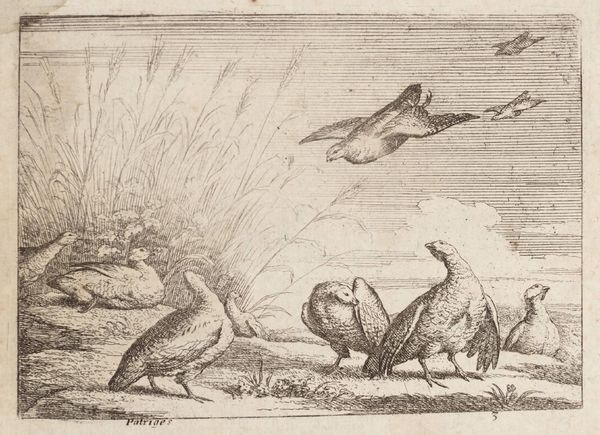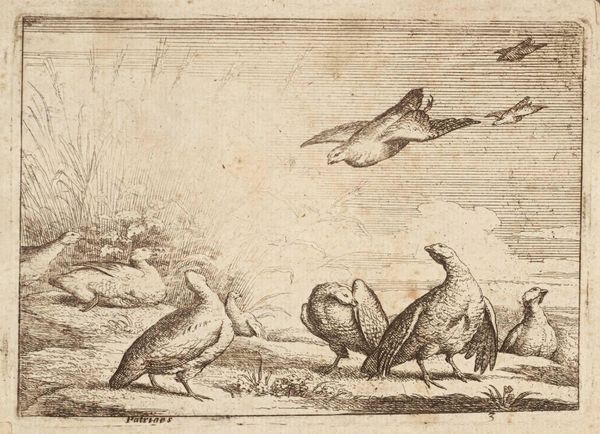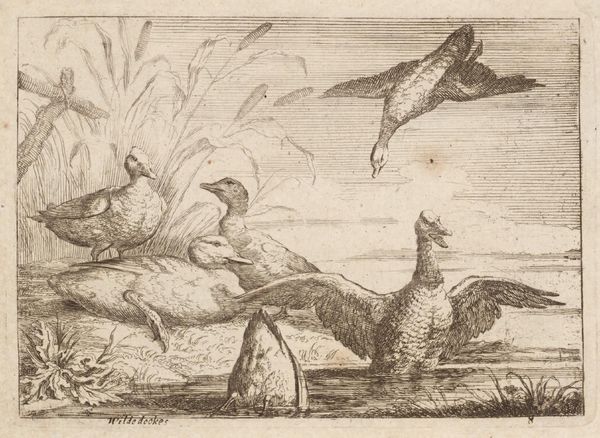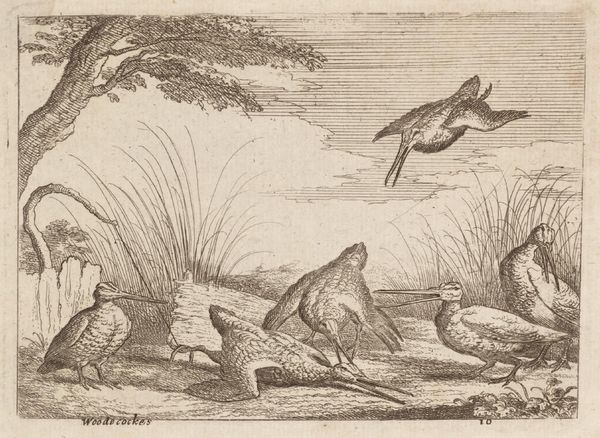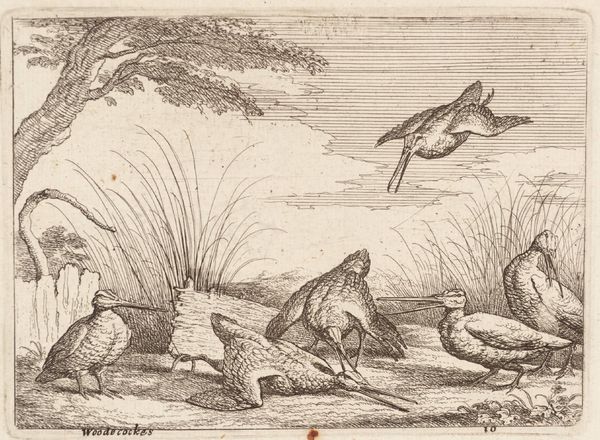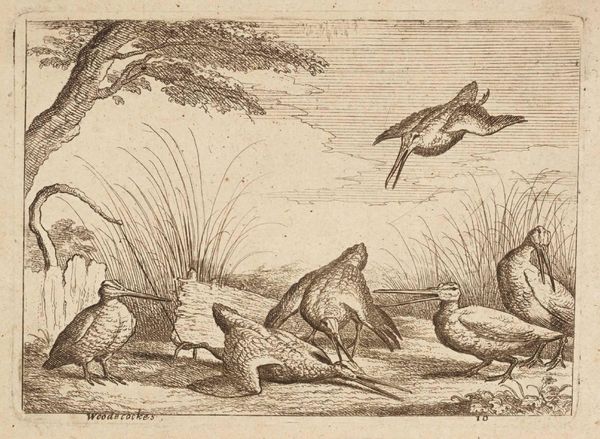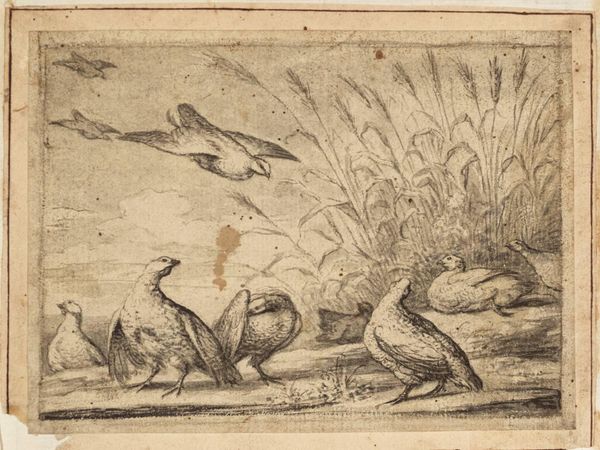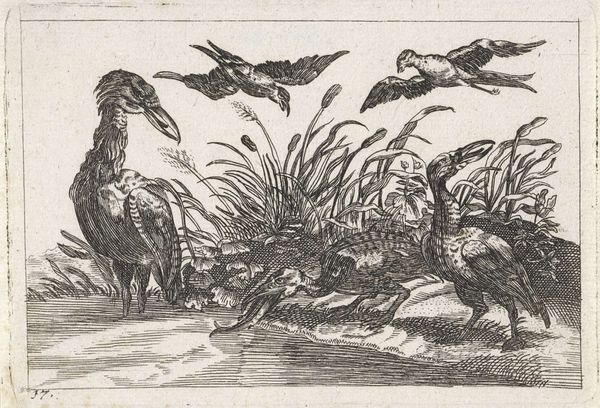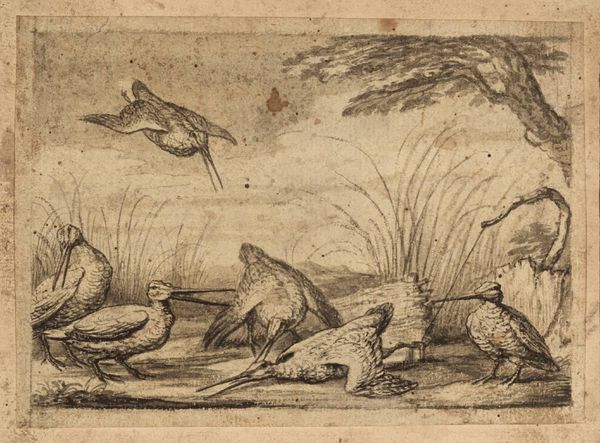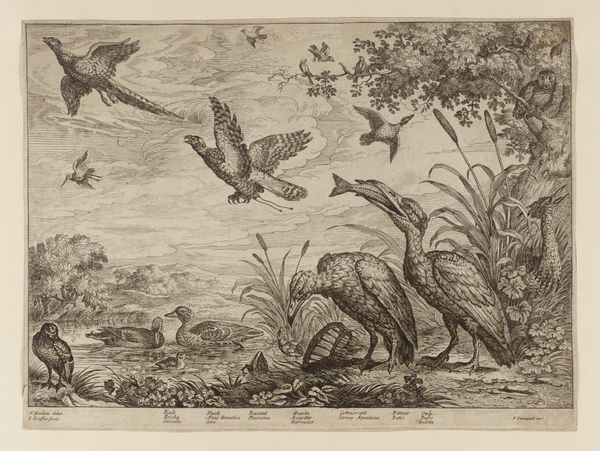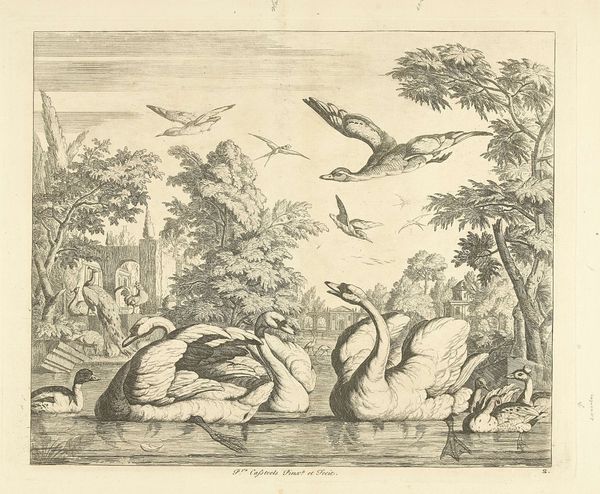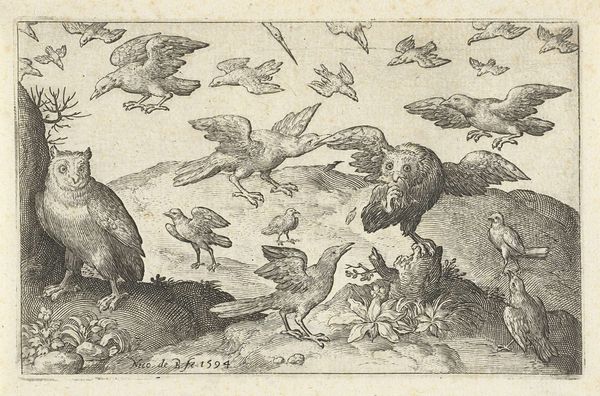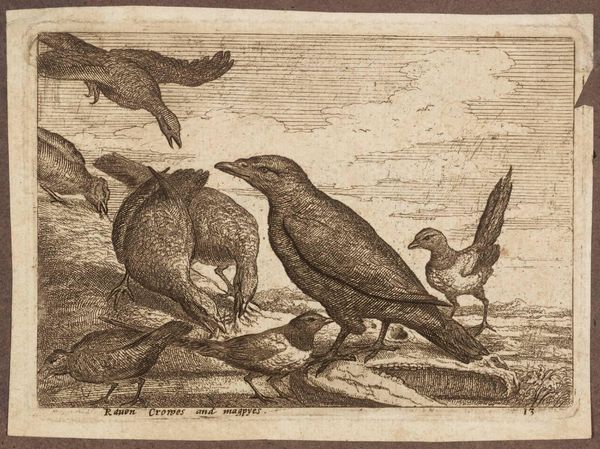
Dimensions: image: 89 x 127 mm
Copyright: CC-BY-NC-ND 4.0 DEED, Photo: Tate
Curator: This is "Patriges," an engraving by Francis Barlow. It resides in the Tate Collections, capturing a scene of partridges in their natural habitat. Editor: The first impression is one of delicate simplicity. The etching is minimal, yet it conveys a sense of life and movement with the birds taking flight. Curator: Indeed. Barlow's skill lies in his confident use of line to define form and texture. Note how the hatching suggests volume and depth, particularly in the plumage of the birds. Consider, too, the printing process: The pressure, the ink, the paper. Editor: I'm more interested in how such prints would have circulated. Barlow, as an accomplished natural history illustrator, was clearly observing and recording his environment to depict it for a growing market. Curator: I see it as a study in tonal relationships. The varying densities of lines create an atmospheric perspective that flattens the picture plane, drawing the viewer's eye into the composition. Editor: Well, I’m thinking about the materials used, the labor involved in producing these prints. The act of distribution speaks to the burgeoning of a consumerist culture that still persists today. Curator: Interesting perspective. It leaves me pondering Barlow’s intention—was it merely a skillful rendition of nature, or something more symbolic? Editor: Perhaps both. And by considering the production and consumption of prints like these, we gain a richer understanding of 17th-century society.
